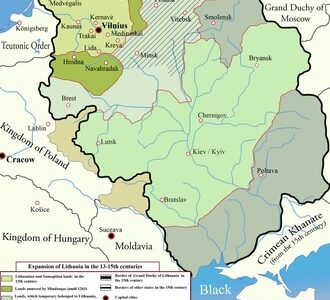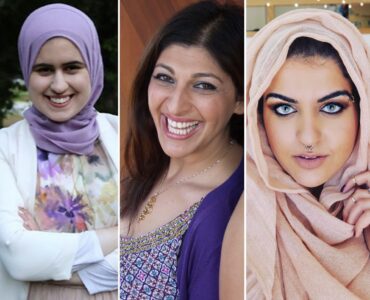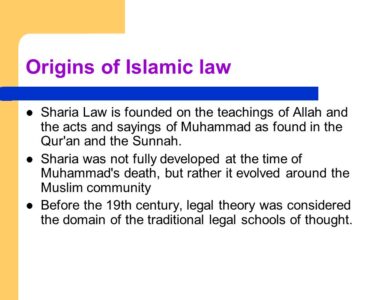
Omar Abdel Rahman
Omar Abdel Rahman, a well-known Egyptian religious scholar and Islamic fundamentalist leader, was born to a poor rural family in the village of al-Jamālīyah, in Lower Egypt. According to some sources, he was blinded in an accident at ten months of age, although he may have lost his eyesight to childhood diabetes. A dedicated student, Omar received a traditional religious education in regional urban centers, memorized the Qurʾān, and developed an interest in the works of leading purists such as Ibn Taymīyah and Sayyid Quṭb. He enrolled at al-Azhar University in Cairo in 1960 and graduated with honors in 1965 from the Faculty of Fundamentals of Religion. Frustrated that he failed to secure a teaching post at the university — when he was appointed by the state as a mosque preacher in a poor rural village in Upper Egypt — Omar quickly returned to al-Azhar, where he obtained a master’s degree in 1967. He fulfilled his lifelong dream with a faculty appointment in 1968.
Abdel Rahman made the pilgrimage to Mecca in 1968 and there met Saʿīd Ramaḍān, an expatriate leader of the Egyptian Muslim Brotherhood who opposed the government of Gamal Abdel Nasser. Ramaḍān persuaded him to carry funds back to Egypt for the families of jailed Brotherhood members, but he was arrested on his return. This first run-in with the law ended his academic career, and he accepted a less than desirable bureaucratic position in late 1969. It was in the late 1960s that he emerged as an outspoken critic of secular ideas.
A critic of Nasser, Abdel Rahman was detained for eight months, and he honed his preaching skills behind bars. To better manipulate opposition forces, the Anwar el-Sadat regime granted amnesty to jailed Islamic fundamentalists, with the aim of enlisting them as a counterweight to leftist forces. After completing his doctorate in 1972, he briefly held a professorship at al-Azhar before moving to Asyūṭ, a center of Islamic fundamentalist activity.
In 1977 Abdel Rahman married ʿIshaʿ Hasan Judah, the daughter of a Brotherhood member, and left for Saudi Arabia, where he taught at King Saud University. Soon after his return, he was arrested for his involvement in the fundamentalist Islamic jihād organization, then led by Ayman al-Zawāhirī, a future lieutenant of Osama Bin Laden. Following Sadat’s assassination in 1981, Abdel Rahman was accused of leading the organization that plotted and carried out the assassination but was acquitted on both counts, released in 1984, and expelled from his native country.
During his protracted trial (1981–1984), three factors led to Abdel Rahman’s emergence as a leading figure in Islamist circles. First, as clearly discussed in his book Mīthāq al-ʿamal al-Islāmī (Charter of Islamic Action), was his explanation of correct Islamic conduct. It marked a departure from the more moderate wing of the Brotherhood, as he argued for an overthrow of the secular state to restore fundamental principles of holy scriptures. Second, he married Fātin Shuʿayb, a kinswoman of several important activists, affirming his solidarity with the Jamāʿah al-Islāmīyah in Upper Egypt and lending weight to his religious status as muftī al-jihād. Third, as major leaders of the jihād organization were executed or imprisoned for life, Abdel Rahman filled the leadership power vacuum.
In the late 1980s, Omar visited Afghanistan, although his primary motive then was opposition to the Soviet occupation. In July 1990, Abdel Rahman was issued a visa for the United States in Khartoum. He settled in the New York area, where he preached and assembled a core group of devoted followers. It was in those meetings that individuals who carried out the 1993 World Trade Center bombing came under his influence.
With the assistance of an Egyptian informant wearing a listening device, the FBI managed to record Rahman issuing a fatwa (religious decree) that favored acts of violence against civilian targets. Washington alleged that one of the plans was to carry out simultaneous attacks on the United Nations, the Lincoln and Holland tunnels, the George Washington Bridge, and a federal building housing FBI offices. Abdel Rahman was arrested in 1993 along with nine of his followers, tried, and convicted of seditious conspiracy in October 1995. He was sentenced to life in prison and was incarcerated in the Federal Administrative Maximum Penitentiary in Florence, Colorado.
The cleric’s imprisonment rallied Islamists, who demanded his release. In 1997, the Jamāʿat al-Islāmīyah attacked European tourists near Luxor, killing fifty-eight. Leaflets were found at the scene linking the atrocity to Abdel Rahman’s detention. Ironically, a member of his legal team, Lynne Stewart, was convicted in 2005 of facilitating communication between the imprisoned cleric and his followers. According to the FBI, Abdel Rahman was seriously ill with a liver tumor, but was given medical attention to stabilize his condition. Following the rise of Islamists in post-Mubarak Egypt, supporters of Abdel Rahman organized several demonstrations in front of the U.S. embassy in Cairo to call for his release. To Egyptian hard-line Islamists, Abdel Rahman still remains a spiritual guide with uncompromising views.
Omar Abdel Rahman
405 – 018-a
https://discerning-Islam.org
Last Update: 02/2021




